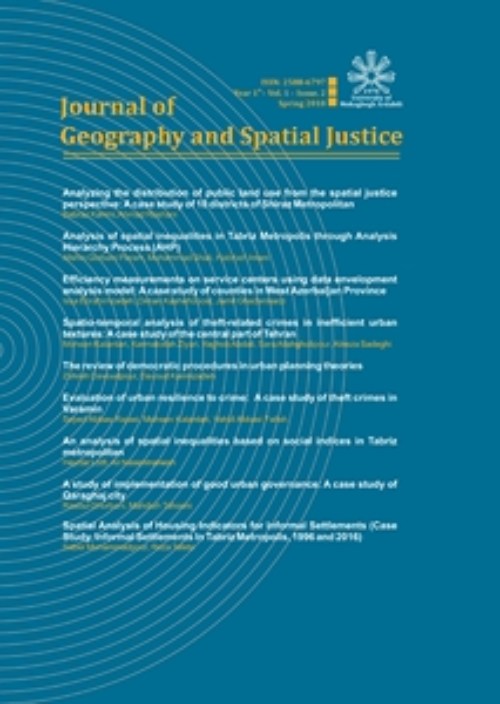A Comparative Study of the Quality of Urban Life between the First- and Second- Generation Afghan Immigrants Residing in Iran (Case Study: Southeast of Tehran Province)
Islamic Republic of Iran hosts the largest refugee populations in the world. According to the statistics officially announced in 2007, there are 1,025,000 refugees in Iran, among whom 940,400 refugees are Afghan and 54,400 refugees are Iraqi. After a period of settling and living in the host community, changes begin to occur in the immigrants' quality of life over time and the lives of the second generation of immigrants undergo greater changes than those of the first generation. The present study aims to explore the differences between the two groups of first- and second- generation of Afghan refugees living in Iran in terms of their quality of life in general and their job quality in particular. The present study has been carried out using a descriptive-analytical approach and the required data have been collected using questionnaires, interviews and field investigations by the researchers. Using Cochran's formula, the researchers randomly selected 404 refugees from the study area. In order to analyze the research variables, they used one-sample t-test, Pearson correlation test and multivariate regression analysis in SPSS. The findings revealed that job differences between the two generations of immigrants were such that the majority of the first-generation migrants were mostly engaged in non-specialized jobs such as construction, cattle breeding, agriculture, waste purchases, and sales. However, most youths of the second generation tend to be involved in jobs such as sewing, car engine repairs, bodywork repairs and even electrical work. Therefore, the clear job differences between the two generations of Afghan immigrants are the immigrant youths' tendency toward highly specialized and freelance jobs and they are in a better position rather than the first-generation immigrants in terms of income and job security. In general, due to the great progress having occurred in the first-generation immigrants' lives, neither the first nor the second generation of Afghan immigrants tend to migrate and return to their country, although the second generation immigrants, unlike the first generation ones, tend to emigrate to European countries.
- حق عضویت دریافتی صرف حمایت از نشریات عضو و نگهداری، تکمیل و توسعه مگیران میشود.
- پرداخت حق اشتراک و دانلود مقالات اجازه بازنشر آن در سایر رسانههای چاپی و دیجیتال را به کاربر نمیدهد.




